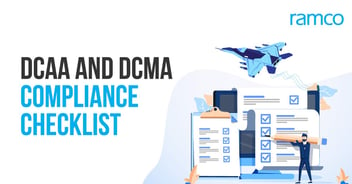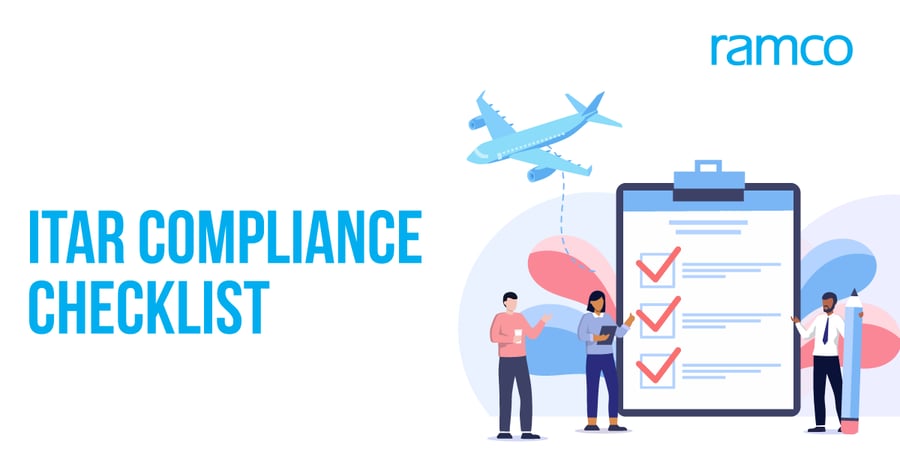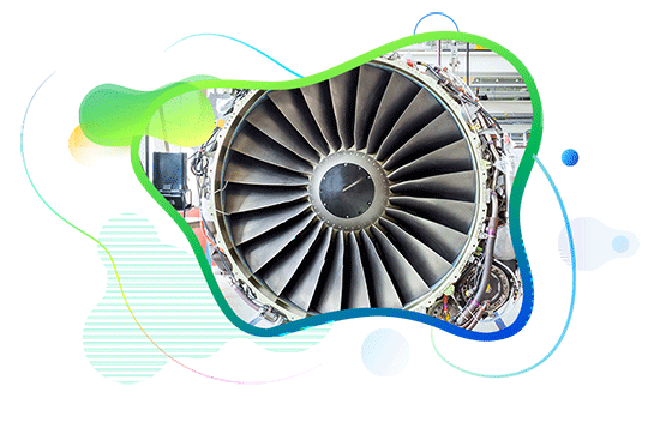
Challenge in Aviation Supply Chain - ITAR Compliance
Published :

Smart aviation software is the key to ensuring compliance with one of the most complex regulatory systems in the world, ITAR
For something as crucial as defense-related parts movement across the globe, it is inevitable that every aspect of it is run through a fine-tooth comb to doubly ensure the parts do not end up in unauthorized hands or for unauthorized purposes.
Working in this area, International Traffic in Arms Regulations (ITAR) monitors the export and import of defense-related articles and services on the United States Munitions List (USML). USML is a list which comprises articles, services and technology that have been categorized as something specific to defense and space-related by the United States federal government. The U.S. government has made it mandatory that all manufacturers, exporters, and brokers of defense articles, defense services, or related technical data must be ITAR compliant.
ITAR compliance in the Aviation Supply Chain can be quite a taxing job. The reason? Some parts used in the defense segment are also used in commercial aviation, and it becomes tricky to categorize them according to its use in each of the segment. Also, the high frequency and volume of movements across the globe makes it challenging to track it at every level.
Aviation ERP systems, comprising of advanced defense software modules, can be of great help when it comes to enabling ITAR compliance by addressing the following 6 key requirements.
Organizations involved in dealing with ITAR related parts have a serious responsibility of adhering to ITAR compliance regulations. Any deviations will result in high penalties and may even be barred from future exports. It is imperative that good aviation software backed up with the process discipline is utilized, that will facilitate compliance in the most efficient way.
This is the first part of the three part series on Defense Requirements by Saravanan Rajarajan. Stay tuned for more.
Enterprise asset management (EAM) involves the management of mission critical assets of an organization throughout each asset's lifecycle. EAM is used to plan, optimize, execute, and track the needed maintenance activities with the associated priorities, skills, materials, tools, and information. The aim is to optimize the quality and utilization of assets throughout their lifecycle, increase productive uptime and reduce operational costs.
Enterprise asset management (EAM) involves the management of the maintenance of physical assets of an organization throughout each asset's lifecycle. EAM is used to plan, optimize, execute, and track the needed maintenance activities with the associated priorities, skills, materials, tools, and information.
The software helps in effective maintenance of assets through preventive, predictive, shutdown and breakdown maintenance strategies. The system also helps enterprises mitigate equipment risks by enhanced safety standards. The streamlined operations and improved asset performance helps organizations increase their investment effectiveness.
EAM is important because it helps organizations track, assess, manage and optimize asset quality and reliability. Asset intensive Organizations have hundreds, thousands, even millions of assets which needs to be maintained to maximize / optimize life of these assets to increase the return on investment.
The key features of effective EAM are:
Asset Intensive companies under the following Industries :
Contact us for a meeting and schedule a demo
This differs on case to case basis, based on the type of installation and unique industry specific requirements. Contact us for a meeting and schedule a demo.
This differs on case to case basis, based on the type of installation and unique industry specific requirements. Contact us for a meeting and schedule a demo.
Stay Connected, follow us on LinkedIn / Twitter to know more about EAM Software latest trends.

All Rights Reserved. © Copyright 2024. Ramco Systems.